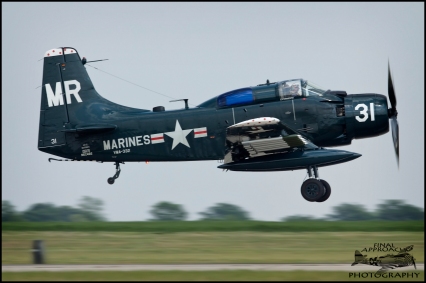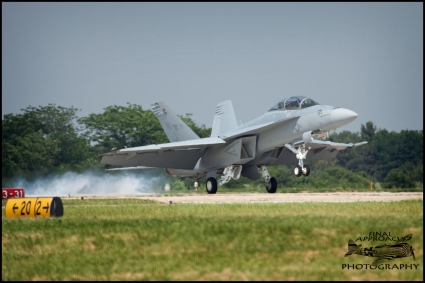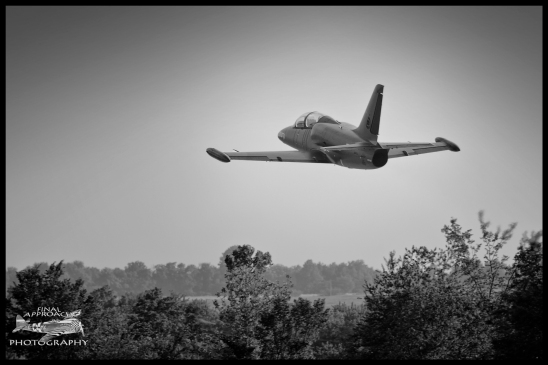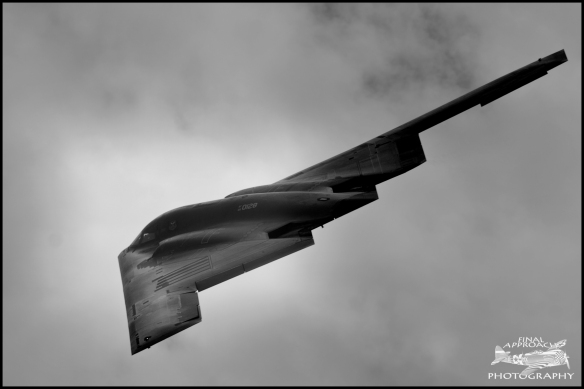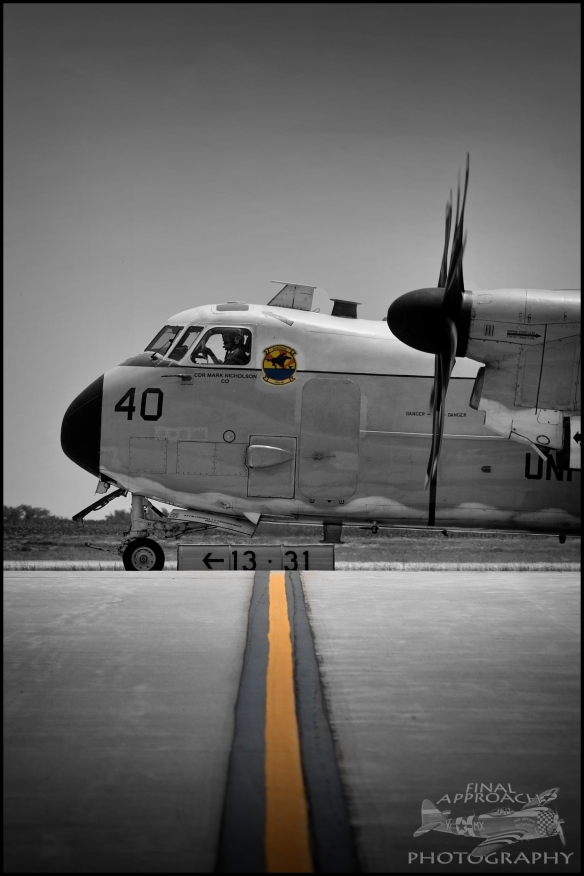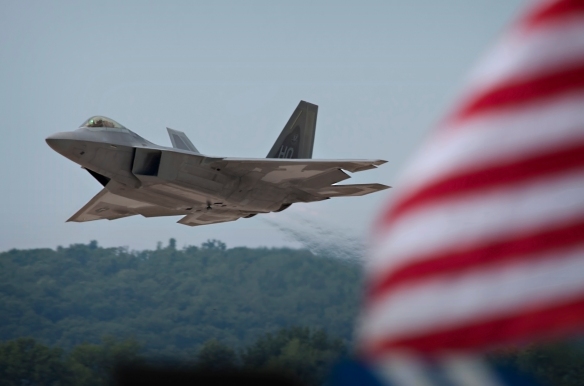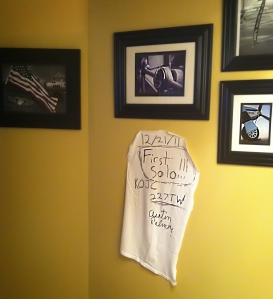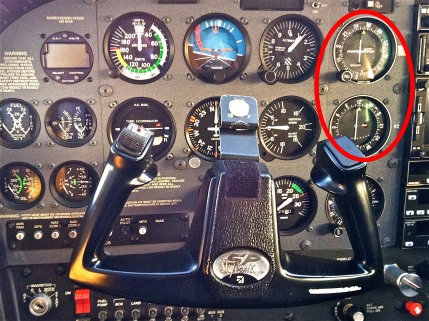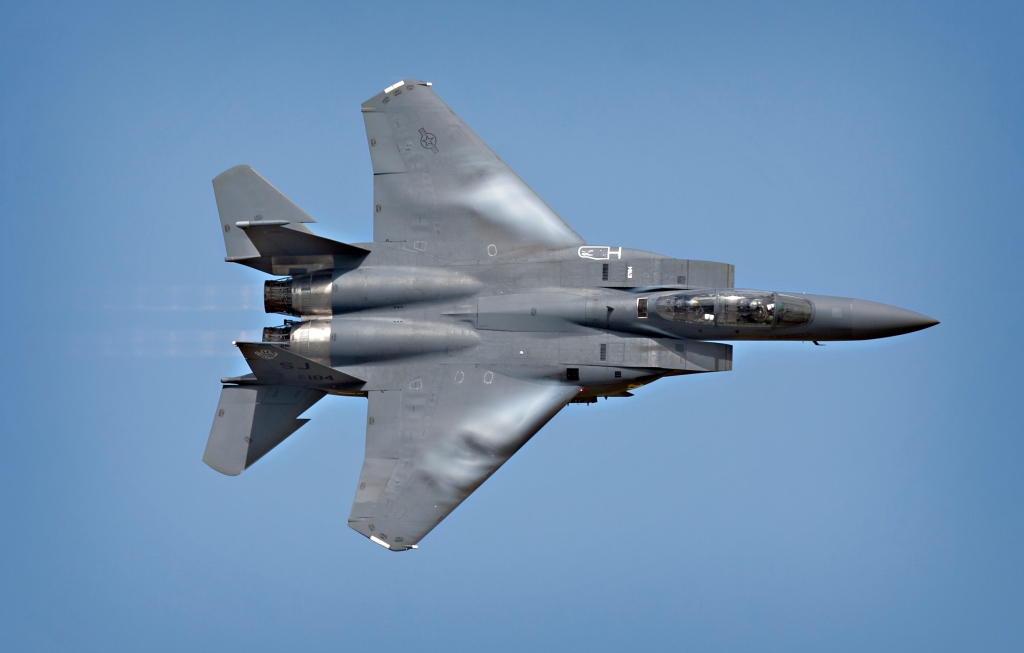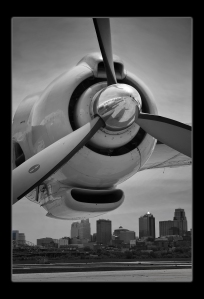My quest to become a Private Pilot – The Check Ride
July 23, 2012
Preface
I have to admit that, embarrassingly, I’ve gotten a bit behind in maintaining and updating my flight blog posts. I left off with flight lesson #20 in talking about basic maneuvers, short/soft field takeoffs, and short/soft field landings. At the time of that lesson, I had logged 24.2 hours of flight time. Since then, I’ve accumulated 25.7 more hours, bringing me to a total of 49.9 which means that it’s time for my check ride! Here’s what I was doing during the last 17 lessons
• Lesson 21: 1.1 hours working on night landings at the Kansas City Downtown airport (2/17/12)
• Lesson 22: 0.7 hours on gusty, crosswind landings (2/23/12)
• Lesson 23: 0.9 hours on steep turns and slow flight (Solo flight;3/5/12)
• Lesson 24: 1.0 hours on my solo cross country to Emporia, KS (Solo flight;3/28/12)
• Lesson 25: 0.5 hours working on flying the airport traffic pattern and crosswind landings (Solo flight; 4/5/12)
• Lesson 26: 3.2 hours on my long cross country to Columbia, MO (Solo flight; 4/6/12)
• Lesson 27: 1.3 hours of gusty crosswind landings, short and soft field landings, and go-arounds (4/20/12)
• Lesson 28: 2.5 hour night cross country to Manhattan, KS (5/16/12)
• Lesson 29: 1 hour of instrument training (6/8/12)
• Lesson 30: 1.5 hours of VOR navigation (6/22/12)
• Lesson 31: 1.6 hours of general maneuvers (6/23/12)
• Lesson 32: 1.5 hours of navigation, unusual attitudes, and other general maneuvers (6/24/12)
• Lesson 33: 1.4 hours of short/soft field landings (7/10/12)
• Lesson 34: 1.5 hours of simulated check ride (7/13/12)
• Lesson 35: 1.4 hours of simulated checkride and hoodwork (7/18/12)
• Lesson 36: 1.4 hours of simulated checkride and general maneuvers (7/19/12)
• Lesson 37: 2.3 hours of solo practice, practice, practice (Solo flight; 7/21/12).
All of this bringing me to:
The Check Ride!
7/23/2012
2.6 hours of flight time
It’s finally here, the day I either earn my wings or head home disappointed in myself before trying again on another day. I’ve been dreaming of this day since I could first say the word airplane, and preparing for it for the better part of a year, taking flight lessons when I could either get off work or when I could secure the plane before I headed in for my shift in the Emergency Department. It seemed to be hit or miss due to my schedule, but I made sure to try and retain all that I could after each lesson in order to make the process as smooth as possible. The great thing is that flying an airplane is a lot like riding a bicycle; once you develop the muscle memory and learn the handling characteristics of the plane, you’ll always remember how to fly it. Since some of my flights were separated by a period of more than a month, I was thankful this was the case.
Anyway, it’s time to get on to what’s really important. I know that everyone’s experience will be a little bit different, but to those who are currently in flight training or thinking of taking lessons, I’d like to relay what I went through and how I prepared for the momentous day. My goal is for this to be as helpful as possible for you, the future pilot, so please don’t hesitate to contact me if I can help out with any questions you might have as you get ready for your own check ride. I’m no Chuck Yeager or Bob Hoover, but I’m always happy to offer insight and advice regarding the lessons I’ve learned so far.
1-Week Before the Check Ride
In order to receive an endorsement to sit for the practical (check ride), I had to pass mock rides with two instructors at Air Associates of Kansas. Austin Palmer, my primary instructor, joined me for the first one and we covered all of the maneuvers I’d be expected to perform during the “real” thing. These included: soft and short field takeoffs and landings, slow flight, stalls (power on and off), instrument flight, steep turns, turns about a point, aborted landings, engine failure, partial power loss, navigating via pilotage, and cross country flight. This flight went okay in the sense that I flew my maneuvers pretty well, but I’d probably mark it down as one of the most personally frustrating flights I’d been on to date. Sometimes it’s the minutiae leads to the biggest stress. So much time is spent practicing and studying that it becomes almost second nature to do the “big” things, but to be a good pilot, it’s the little things that you have to get right on a consistent basis. Whether it’s adding the right amount of crosswind correction, remembering to start timing your cross-country flight at the first marked checkpoint, or leaning out the fuel as soon as you reach your cruising altitude, you’ve got to do the little things to be good. This is why I was so frustrated at the end of this particular flight. We had started off on a simulated cross-country flight from Johnson County Executive to Emporia and reaching the second checkpoint, Austin asked me to divert and find a small airfield by using the art of pilotage. After finding and overflying the small grass strip, he asked me to execute a series of basic maneuvers beginning with a couple of steep turns. Eager to prove to Austin and to myself that I could do these without losing or gaining any altitude (something I’d be evaluated on during the check ride), I started my 45-degree turn to the left over the wide open fields of Kansas. I quickly finished the left turn and then rolled immediately into a right turn without too much of a change in altitude. Austin then asked me to reduce altitude to 2,000 feet MSL and execute a turn about a point, so I picked a barn on the ground to use as a reference point and jumped right into the maneuver. When I had completed about 270-degrees into the turn, it hit me like a ton of bricks…I forgot to do one of those “little” things. I forgot to do my clearing turns. One of the keys to being a good pilot is always be safe, and a clearing turn is one of those essentials for staying safe as they’re used to scan the area for other traffic and to increase your profile so other planes can see you. Essentially, if this had been the real check-ride, I would have failed. My nice flight had suddenly turned sour and I went to work beating myself up. I tried to patch up the problem by stopping the maneuver to perform the clearing turn so that I could be sure we were clear of traffic in the vicinity, but by that point it was too late. We ran through a couple more maneuvers and then returned to the airport for landing. I wasn’t lined up exceptionally well on final so I executed a go-around and then came back to land, but I was definitely not happy with myself. I waged an internal war until July 18th when I had the opportunity to fly my second mock check ride with Matt Miller, a seasoned pilot with decades of flight experience.
Matt and I actually had to split this into two different flights due to airplane availability. (I’m not sure I’ve mentioned this, but the plane I’ve been flying has been fitted with a Garmin G600 avionics suite and it…is…awesome!). Anyway, Matt and I took off on July 18th towards Lee’s Summit Municipal Airport (KLXT) and we worked on instrument flight, recovery from unusual altitudes, short field landings, and forward slips to landing. The ride went pretty well and I returned to Johnson County Executive with a slight feeling of redemption. The next day we picked up where we left off and we worked through the “basic” flight maneuvers. We did a series of steep turns, slow flight, power-on and power-off stalls, emergency procedures and emergency landings, and you can bet I was absolutely sure to do my clearing turns! This time, however, I had another slight problem in the form of a very odd power-off stall. Matt had me stall the plane while in a 20-degree bank with my nose below the horizon. Pull the power, lower the flaps and bleed the airspeed towards Vso (dirty configuration stall speed). Airspeed at 40-knots…nothing. I continued to bleed the airspeed all the way to 25-knots and the plane startedto shudder but it never dipped and it never really gave me that “real” stall feeling like it did when doing a nose high stall. So I kept the yoke tucked firmly into my chest just waiting for that left wing to dip, but it never did. So we’re falling at about 500-feet per minute, the plane is pivoting in circles above the pastures below, oscillating the whole way until I finally say, “I’m going to abort this maneuver and try again”, not realizing at the time that a “nose low” stall leads to a completely different feeling than does a “nose high” stall. After recovering, Matt just looked at me and said, “What was that???”. I was a little speechless, only able to mumble something about not getting it to stall like I thought it was supposed to, slowly realizing that I was actually stalled the whole time and my recovery should have occurred much earlier in the maneuver. Instead, I let us pivot in circles for about 30 seconds as our altitude slowly dropped. Needless to say, I learned a valuable lesson that day and I now know what to expect when in that configuration. [I do have to interject by saying that in a “real world” scenario, I would have recovered long before I did that day, but I was more concerned with getting it to stall the way I was accustomed to…lesson learned!]. After the flight, Matt said that other than the power-off stall, he was pleased with my ability and that I was ready to go. Now that I’ve received the thumbs up from Austin and Matt, it’s time to sit for the real thing.
The Big Day: Monday, July 23 2012
My check ride was scheduled for 0800 at KLXT so I knew that I needed to get to bed early so I could be well rested and at the top of my game. The plan was to be in bed by 1100, but plans never seem to work out so it was actually closer to 0200 when I finally closed the books and turned my light off. Four very short hours later, I woke up and headed to KOJC. I really wanted to go wheels up by 0700 so I could get some practice in before touching down at KLXT. Again, my well-laid plans blew up in my face as I rolled into the parking lot at 0630 only to see another pilot performing a pre-flight inspection on the plane I was scheduled to fly, N227TW, good ol’ Tango Whiskey. Crap… I walked into Air Associates to check the schedule and, sure enough, another student had signed the plane out from 0700-0800. I headed out to the ramp to talk to him and tell him what my situation was and, luckily for me, he was a super nice guy who without hesitation told me I could take the plane. I felt horrible because his scenario was a lot like mine in that he had to reserve planes at odd times due to his work schedule. Luckily he ended up getting into another plane for the morning, but I’d still like to say that, good sir, if you’re reading this I thank you!
With that near catastrophe averted, I took a couple of deep breaths, cleared my mind and started my pre-flight. Everything looked good on the Tango Whiskey so I headed back into the office to collect the engine and airframe logs to show the examiner that the requisite inspections had been completed and were up to date (100-hour, annual, ELT, pitot/static, and transponder). Flipping through the logs, however, I noticed a problem…the 100-hour inspection that was performed a couple of days earlier hadn’t been documented and stickered in the logbook yet. So I quickly ran to the hangar, found some extremely helpful maintenance personnel who took care of the documentation problem, and then ran back out to the plane. A quick check of the ATIS (weather) and I was finally off! The only problem was that I didn’t go wheels up until 0730 and it was about a 15-minute flight to get out to Lee’s Summit, meaning all of the practice time I had planned for had gone up in smoke.
Winds departing KOJC weren’t too bad, basically a straight-on headwind at 200 at 6 knots departing runway 18. I pitched the nose up to reach my best rate of climb speed of 74-knots and things were feeling pretty good. Reach 1,600 feet MSL before making a left turn to the northeast and then it hit me; it was go time! I arrived in the pattern at KLXT much more quickly than I had anticipated, primarily because I so keyed up. I diverted my flight path a little to the south so I could enter a left-traffic pattern for runway 18 without having to overfly the field. Pull the throttle back, add one notch of flaps, make my base turn, add another notch of flaps, make the turn to final, add that last notch of flaps and set ol’ Tango Whiskey down on the centerline. Things were starting to feel pretty good after the somewhat inauspicious start. That feeling didn’t last too long though. After touching down and taxiing to the hangar, I shut down the plane and started to organize my gear. With everything in order, I opened the door and BLAM! My iPad seemed to launch off of my lap, straight down to the concrete below. #$%@#! I tried to get out of the plane as quickly as possible to assess the damage and, of course, my right leg got tangled in my headset cord, almost causing me to fall flat on my face. #$%@#$@#!!!!!! Things were no longer feeling so great. The bright spot at this point was that my iPad was thankfully still intact.
I walked in through the hangar and was immediately greeted by Ron (my examiner) and Austin. From the very outset of the meeting Ron made me feel at ease with the situation, telling me just to relax. He’s a long-time pilot and he tells me that he doesn’t see any reason why I won’t pass as long as I can prove I’m a safe pilot. I started feeling a little bit better at this point. We go over all of my paperwork to make sure it’s in order, which thankfully, it is. Austin says good bye and good luck and Ron and I begin the oral portion of the exam.
Oral Exam
We start by going over the maintenance logbooks as I’m asked to point out all of the aforementioned requirements. It’s at this moment that I’m thankful I took the time to check them over before leaving KOJC. Had I not, the check ride would have been cancelled right then and there since the most recent 100-hour inspection hadn’t been documented prior to my departure. We then transitioned into what special flight permits are and how they’re granted. After those warm up questions in the front office, we move upstairs to a quiet area to knock out the rest of the oral portion. Here’s what was covered:
• He wanted to know what the requirements were to obtain a private pilot certificate.
• What are the privileges and restrictions associated with a private certificate?
• He asked what, as a private pilot, I must have in my possession when flying.
• Which types of aircraft would I be certified to fly with a private certificate? What types of aircraft would require additional ratings or checkouts?
• How long is a pilot certificate valid for? What must be done to maintain currency?
• How long is a medical certificate valid for a private pilot?
• If I were to change my address, would I have to notify the FAA? How quickly would I need to notify them?
• What documents were required to be carried within the aircraft?
• Who is responsible for maintaining the aircraft in an airworthy state? Who is responsible for ensuring it’s airworthy prior to flight?
• What equipment is required to fly? What is a minimum equipment list?
• What are airworthiness directives?
• Are private pilots required to carry their logbooks during flight?
• What are the 2 main types of ice?
• What are the 4 types of icing?
• What do you do if you fly into icing conditions?
• How do winds aloft and temperature relate to icing? How would you use this information if you inadvertently flew into icing conditions?
• What are the types of structural icing?
• What are the stages of a thunderstorm and how could they affect flight?
• What would you do if you encountered a thunderstorm in flight?
• How could you obtain a pre-flight weather briefing and what type of information would that briefing yield?
• What is the frequency for EFAS (en route flight advisory service)?
• What is a TAF?
• What information is reported in a PIREP?
• What is wind shear? What would you do if flying into an airport where wind shear had recently been reported? What would you do if you were unable to divert?
• What are the 4 dynamic factors that act on an airplane?
• We then moved to the sectional chart and he asked me about the different classifications of airspace, the requirements to enter the airspace, how I would transition through the airspace, and what I would do in order to make radio contact.
• He asked what an MOA was, if I could fly through without making radio contact, and who I would contact if I were to clear my flight through a MOA prior to penetrating the boundary.
• He asked about military training routes, victor airways, and what each symbol along the way meant.
• He asked me to quickly tell him the distance between 2 VOR stations and what the arrows at the intersection of Victor Airways signified
• Towers are clearly marked on a sectional chart, but he wanted to know what the dot under each tower meant (it’s the latitude and longitude of the tower)
• He wanted to know what the markings around a runway symbol on the sectional chart signified
• How is Terminal Area Chart (TAC) availability noted on the sectional
• He then asked for my weight and balance calculations and waypoint information for our simulated cross-country flight from KLXT to KTUL (Tulsa). I had been asked to prepare as though we would be flying at night so I developed a flight plan utilizing VOR waypoints rather than visual checkpoints which he seemed happy with.
• Based upon my weight and balance, he asked me if we’d have enough fuel to make it to KTUL, how much we’d have remaining, and how much we should have to safely fly at night.
• He asked me to use the takeoff and landing weights I had used to calculate short field takeoff and landing distances and to calculate the current pressure altitude (29.92 minus current altimeter reading x 1000 + airfield elevation)
• After we reviewed my calculations, I felt elated when he said I did very well on the oral portion and as soon as I was ready, we could head out for the practical (flight) portion.
Practical Exam – Cue uncontrollable palm sweat.
Ron was a very nice, gracious, and fair examiner who went out of his way to make me feel comfortable with the process. Even with all of these factors in place, I was still extremely nervous. I felt comfortable with the oral exam, but the dream of becoming a pilot that I’ve had since I was 5 years old when I took my first ride in my Uncle’s Tri-Pacer was all on the line, right here and right now. I knew I could perform all of the maneuvers without problem, but still, there’s that omnipresent pressure of the here and now. Would I have a stellar flight or would it be one of those bad days? We’d soon find out.
We started with a quick pre-flight briefing with Ron telling me what we’d be covering in flight. The plan was that we’d start with a short field takeoff and would then depart according to my flight plan to Tulsa and then we’d likely divert to another location where I’d probably have a couple of simulated in-flight emergencies. After that, we’d hit all of the basic maneuvers, simulated instrument flight, and then return to KLXT for soft/short field landings. Fair enough, let’s get started!
I made my way out to the plane to start the pre-flight inspection where I found that my landing light had apparently burned out sometime before arriving to KLXT (it was working when I departed KOJC). Since we were flying during the daytime, Ron said it was no problem and that I could continue my pre-flight. He watched my inspection all the way around and as I was sumping the fuel tanks, he asked what I would do if I found any water in the fuel. I finished the pre-flight and then resigned myself to the fact it was time for the inevitable. Let’s go flying!
It was already brutally hot with the temperature hitting 106-degrees, so I was sweating pretty hard by the time I taxied to the end of runway 18 for departure. Sweat dripping, I applied full throttle and was happy to execute a nice and smooth short field takeoff even with a pretty stiff crosswind, for a new pilot at least (240@12 kts). We climbed out on a heading of 180 and I was asked to set the autopilot to maintain altitude at 4,500 feet MSL. This is when I started to feel a little panicky…I had only used autopilot in one of my previous training flights, but luckily that one flight had occurred when I was flying solo a couple of days earlier. Unfortunately, since we didn’t focus on the functions during flight training, I didn’t get things exactly right the first time but Ron was gracious enough to coach me on how to adjust the settings. Even though Ron was very nice about helping me out, I felt the urge to mentally beat myself up and tell myself I’m an idiot for not being 100% familiar with its operation. But, beating myself up at this point in the flight would only make things go downhill so I got over it and moved on. As we approached the first checkpoint of my simulated cross-country, Ron asked me how my actual ground speed compared with my pre-flight calculations. I was very happy when I realized my real-time data and my calculations only varied by 1-kt! Score!!! That feeling of happiness didn’t last too long, however, as Ron pulled the throttle to simulate a partial power loss about 10 miles south of Lee’s Summit. I knew that we were pretty close to Harrisonville since highway 71 skirted the west side of the town and the airport should be just to the south. I told Ron that in the case of a partial power loss, I’d divert to the nearest airport as long as I had enough power to at least maintain altitude. I visually identified the airport at Harrisonville and started to overfly the runway at 500-feet above the traffic pattern when Ron pulled the throttle all the way and he told me I now had a full engine failure. Luckily, I was already in the pattern but I was still pretty high. I knew that making it to the runway safely was the primary goal, but I think I made my base-to-final turn much to close as I was well above the glidepath as I approached the runway numbers. I was already at my best glide speed of 68-knots so I put the full 30-degrees of flaps in and made a steep descent to the runway. I found in training that these simulated emergency landings were usually my best since I didn’t have much time to think, and this one seemed to be the same. I nosed the plane over, dove to the deck and touched down at about the 1,500 foot mark, well short of the end of the runway. It was an uncontrolled field without full-length taxiways so I back-taxied on the runway and Ron asked me to fly a soft field takeoff (my favorite!).
I lined up on runway 17, added 10-degrees of flaps, buried the yoke in my chest and kept the nose wheel off the runway the entire time. Rotation occurred at about 40-kts and then I held it in ground effect until my airspeed rose enough to allow me to retract the flaps and climb out safely. Success!
After clearing the field, Ron took the controls as I put the “foggles” on for some simulated instrument work (foggles block everything in your field of view except for the instruments, kind of like horse blinders). He asked me to climb to 3,500 feet while turning to about 5 different headings which, thankfully, I was pretty comfortable with doing. After reaching our designated altitude, Ron took control once again and said we’d do a couple of unusual attitudes (love these!). I closed my eyes as he pitched, rolled, climbed, and dived. After about 20 seconds he told me to open my eyes and correct our attitude (no visual references, just the instruments). The first unusual attitude had us diving to the left so I pulled the throttle to idle, rolled wings level and pulled up. The second had us pitching up in a pretty steep right-handed climb with the stall horn blaring. Add full throttle, roll wings level, and nose us over to straight and level flight. I felt my self-confidence rise when Ron told me I did a stellar job at the recovery. I was then able to take my foggles off and he asked me to do a steep turn to the right and to the left. I made my clearing turns and then entered into a right steep turn and was very happy with myself when I stuck the altimeter and didn’t let it budge. I immediately rolled into a left steep turn and gained about 50-feet at about the 180 degree mark, but was able to correct it to complete the turn on my original altitude and heading of 270.
Next up was a turn about a point. I found a decent intersection on a dirt road to use and I entered on the downwind to start the 360-degree turn at 30-degrees of bank. I completed about 180-degrees of the turn when I panicked and realized I didn’t do a freaking clearing turn prior to the maneuver. Even though a 180-degree turn is technically a clearing turn and I was watching for traffic the whole time, I quickly told Ron I was breaking the maneuver off because I stupidly forgot to declare I was clearing the area. Two 90-degree turns later, I was back into the downwind leg of the maneuver and I finished without problem, other than the mental problem as I kept telling myself “It’s the little things, stupid. Get it right!”. We exited on a heading of 360 when Ron asked me if I saw any runways nearby. I immediately spotted a grass strip located on the shore of a small lake right in front of us. He said “good, now land there”. (As a side note, it’s these types of instructions that always get me. I knew this was a private landing strip, but here I was on final approach, less than 25-feet above the ground, thinking the whole time, ‘Is he going to actually have me land? Am I going to have to go around?” I told myself to just assume I was landing unless told otherwise and then move on). Anyway, while in the downwind leg of the traffic pattern, I noticed a barn located squarely at the end of the runway. Finally, a concrete example of the hypothetical 50-foot obstruction! I couldn’t believe it; they really do exist! (For those who haven’t dealt with short field landings at this point in your training, every single example you’ll be presented with, either in training scenarios or in textbooks, will involve a theoretical 50-foot obstacle located at the very beginning or end of the runway). The turn from base to final felt pretty good and I was aligned perfectly with the runway, ready to clear the obstacle and land if needed. After clearing the barn, I entered into ground effect and was literally feet away from touching down when Ron said “there’s a cow on the runway!” (there really wasn’t, he just wanted me to abort the landing). I applied full throttle and then brought my flaps up in increments and we were off again.
Next up was a return to KLXT where I’d do a soft field landing before finishing the flight. I immediately made a call to the CTAF (common traffic advisory frequency) of KLXT, noting I was 10-miles to the south, preparing to enter an extended downwind for runway 18. About a minute goes by and Ron asks me to double-check the airplane configuration. I think he saw the confused look on my face so he told me “you just broadcast your intentions which is good, but you did it on Comm 1. Your KLXT frequency is set up on Comm 2.” @#$%@!!$ I’m an idiot!!!! I quickly change comms and make the appropriate calls. Then, when I’m at left midfield downwind for runway 18, I hear another call for KLXT with a Cessna pilot noting he’s on a 5-mile final for runway 18. I’m getting ready to turn base to final and I know that I would have adequate time to land and clear the runway before the other pilot touches down. I make my turn and call out that I’m on base for 18 when the other pilot excitedly states that he’s on a short, 1-mile final for the same runway. Curses!!! I don’t see the traffic anywhere, but I tell Ron that I don’t like what’s going on and that I’m going to divert to the right and re-enter the downwind for 18, to which he agrees is a good idea. I spot the traffic and make my base turn when abeam with him. The only problem is that we’re actually about 4-miles out from the runway now (the other pilot gave an incorrect distance) and I had been configured for a “standard” landing from the traffic pattern. I quickly reconfigure the airplane and then turn base to final. The entire approach feels pretty good until I get about 5-feet above the runway. As I start to set the main gear down, I catch a pretty stiff gust of wind from the southwest and, of course, it turns me to the right just as my wheels are touching the ground. What happened next could only be described as a relative nightmare. The wheels touch down and I’m slightly off center but the airplane naturally wants to drive in a straight track, so we start to swerve and then the left wing starts to dip. Crap, I don’t have enough aileron in it to correct for the crosswind! We do a few small “S’s” on the runway with the wing wanting to roll on me. I quickly add right aileron to fix the situation and get us back on all 3 wheels, but not before Ron starts to reach up for the controls. I get everything settled down and slow the airplane to taxi speed and he tells me to take it on back to the hangar. I don’t think I’ve ever cursed myself so hard as I did in that exact instant. Ron had told me before the flight that he was confident I would pass based upon the input he had from my instructors, but if anything were to happen that was unsafe, he’d tell me to just head back and he’d call the flight, so you can imagine my angst as we slowly taxied back. I think I was almost in supraventricular tachycardia by the time we parked as it felt like my heart was beating at 250 beats per minute. I shut the plane down and pulled the keys from the ignition and Ron said “let’s go back inside and we’ll talk about a couple of things.” I was totally sure those words were to be interpreted as “you failed, come get your pink slip” which made me really angry at myself because I felt like the rest of the flight went relatively well. I think he saw the look of dejection on my face because he quickly followed up by telling me “just in case you were wondering, you’ve passed. Good job!”
As soon as he said that, I became very conflicted. I was very relieved and excited to know that I had passed the check ride, but I was so unbelievably irate with myself and embarrassed at my final landing that I couldn’t truly enjoy the fact that I was now officially a pilot. I felt like a major league baseball player who, after an illustrious career, swings so hard that he falls down in the batter’s box as he strikes out during his last at-bat. I felt embarrassed and very angry at myself, but at the same time I felt very happy. It was a very odd, dichotomous feeling.
Ron walked back in as I secured the plane before returning to his office to discuss the flight. He said that first and foremost, he felt like I was a safe pilot and that I did all of the things necessary to ensure the safety of my passengers and myself. He made me feel pretty good when he said I did a stellar job at recovering from the blinded unusual attitudes he put me in, saying “I had you in some extremely odd attitudes!” The biggest problem with the flight, as I had expected, was the final landing. He stressed that I need to be absolutely sure we were completely aligned with our forward momentum before setting the plane down, especially for a soft-field landing like I was trying to simulate. Coming down slightly sideways on an unprepared airfield is a recipe for a cartwheeling airplane. He said he gave me the benefit of the doubt on that one since it was hot, gusty, and that other aircraft had forced me to divert and seriously impeded with the normal traffic pattern. I appreciated hearing that, but it really did nothing to alleviate the irritation I was feeling with myself at that point. I didn’t want to make excuses for a poorly executed landing. At that point in my training, it was all on me to compensate for whatever conditions I was presented with and execute. No excuses. He gave me my certificate, shook my hand, told me good job and to enjoy flying and I was on my way again.
I walked back out to the plane and did a quick pre-flight before launching again for a nice, leisurely, no pressure trip back to KOJC. I decided not to rush, but rather fly a nice wide arc back to KOJC and kind of savor the moment. I taxied to the centerline of runway 18 at KLXT, advanced the throttle to 100% and rotated once I hit 55-kts. This lift off was different. It felt sweeter, I heard the intricacies of the engine more clearly, and the outside air smelled fresher. It was at this moment that I felt a wave of relief rush over my body. I was no longer considered a student pilot. After 33 years of waiting, finally, on July 23, 2012 on a 106-degree Monday I could finally call myself a private pilot. I wasn’t sure if the tear moving down my cheek was due to the unbridled joy I was feeling or because the air vent was blowing directly into my eyeball. Either way, I was overcome with a feeling of pure ecstasy and self-satisfaction at having accomplished one of my life-long goals.
I returned to KOJC that afternoon and landed with a gusting to 20-knot crosswind. It was the best landing of my life.
Next week: A summary of the requirements for getting your private pilot certificate and some hopefully helpful advice for future pilots.





